
Coloured Stone Cuts and Shapes
The word lapidary (adj.) relates to the work of cutting, grinding, polishing, or engraving precious stones, mostly other than diamonds. It is a process that turns a coloured precious or semi-precious rough stone into a beautifully shaped gem to use in jewellery. A well-cut stone helps to hide imperfections and bring out its true colour and brilliance. Broadly, there are two styles of gem cutting – faceted and non-faceted, or cabochon. While faceted gemstones have geometric shapes and flat polished surfaces, cabochons have rounded surfaces. Today, fancy cuts such as flowers, leaves and stars can also be seen in coloured stones. It is the artistry of the gem cutter or lapidary (n.) that makes each coloured gemstone a piece of art.
Here are some of the most common cuts used in gemstones:
1. Cabochon Cut
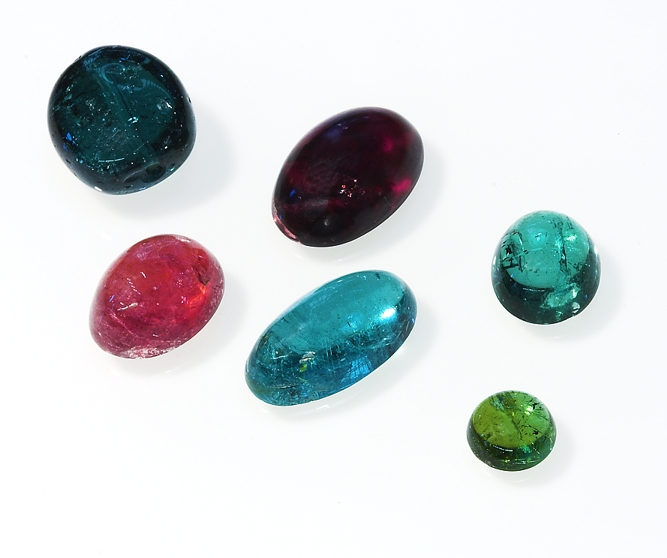
The cabochon, also known as a cab, is the oldest form of shaped and polished gemstone dating back to the 13 or 14th century. The name, derived from the Norman French word “caboche”, meaning head, describes the stone as having a flat bottom with a convex or rounded domed top. The cut helps to display characteristics like asterism (the star effect) in star sapphires and rubies, chatoyancy (Cat’s Eye effect) in tourmalines, Tiger’s Eyes, chrysoberyls, iridescence (changing of colour in some lights or angles) in opals, or adularescence (milky-bluish lustre) in moonstones, rose quartz and agates. While the traditional cabochon was oval in shape, today cabochons are available in rounds, triangles, and rectangles.
2. Buff-Top
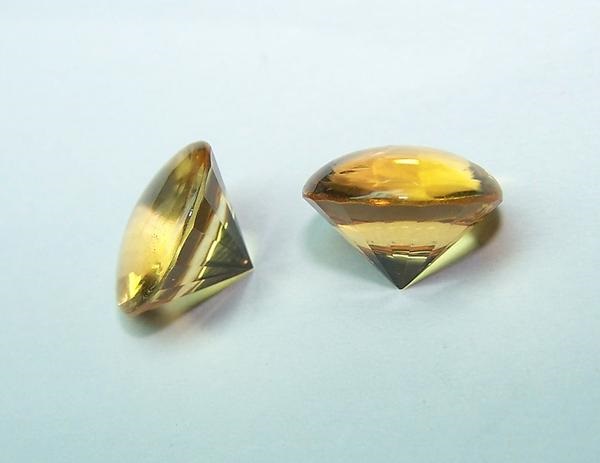
This cut is a mix of a cabochon and a faceted gem. The top has a cab dome while the bottom contains facets on the pavilion below the girdle. These strategically placed facets allow light to reflect from the pavilion, giving the gemstone an illusion of depth. Bufftops are often found in men’s jewellery. This kind of cut is exactly the opposite of a rose cut.
3. Round Brilliant-Cut
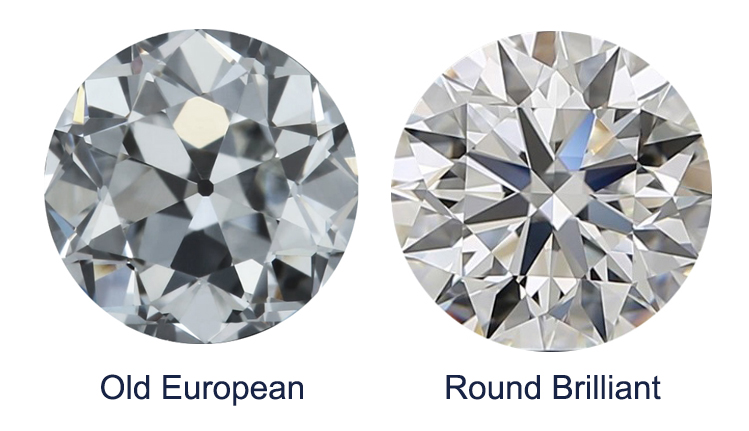
The round brilliant-cut gemstone, also known as the Round Cut, American Ideal Cut or American Standard Cut has 57 facets. It was perfected by mathematical genius Marcel Tolkowsky in 1919, calculated with variables such as the index of refraction and covalent bond angles. Today, the best diamond solitaires in the world use this cut. Tolkowsky’s recommended cut height for a Round Brilliant is 58% of the diameter of the diamond, 43% for the pavilion, and 14% for the height of the crown. This ratio provides maximum fire, brilliance and sparkle. This cut is also commonly found in coloured gemstones.
4. Oval Cut

The Oval cut has an elliptical shape with 69 facets. Created in the 1950s, it is a hybrid between a round cut and a marquise cut. Often used in coloured stone and diamond engagement rings, the elongated silhouette of the gemstone creates the illusion of a larger gemstone allowing the finger on which it is worn to look longer and slimmer.
5. Baguette Cut
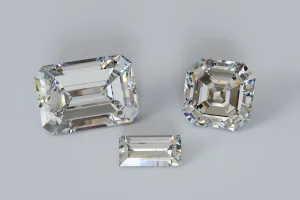
Long, oblong and rectangular-shaped Baguette cut gemstones first appeared during the 1920s-30s art deco movement. Crafted in step cuts the 14 facets resemble a pyramid without a top. It has clean lines and a modern, geometric look. Baguette cut stones can be either regular or tapered, resembling a trapezoid.
6. Princess Cut
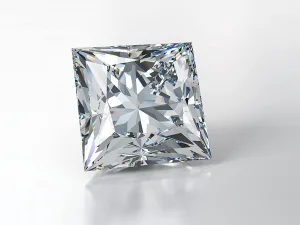
The Princess cut, or Square cut, is the second most popular cut, after the Round Brilliant cut. It is technically known as the Square Modified Brilliant because it is a square version of the Round Brilliant cut. It has between 58 and 76 facets that give it brilliance and sparkle and maximize its lustre. A square-cut gem retains 80% of the rough gemstone. Solitaire engagement rings have princess cut gemstones with trilliants at their sides.
7. Pear Cut
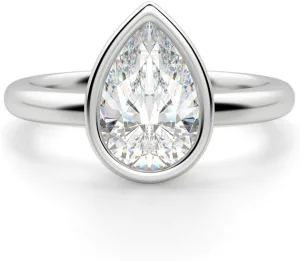
A Pear cut gemstone looks like a teardrop. It offers 71 facets that reflect light and allow the colour to showcase dramatically. It is a difficult cut that needs an expert lapidary to align the point with the peak of the rounded end. The gemstone also requires a six-prong setting to maintain support for its fragile point. Pear cut coloured stones have donned jewellery since the 1400s and are a favourite in earrings and pendants even today.
8. Emerald Cut
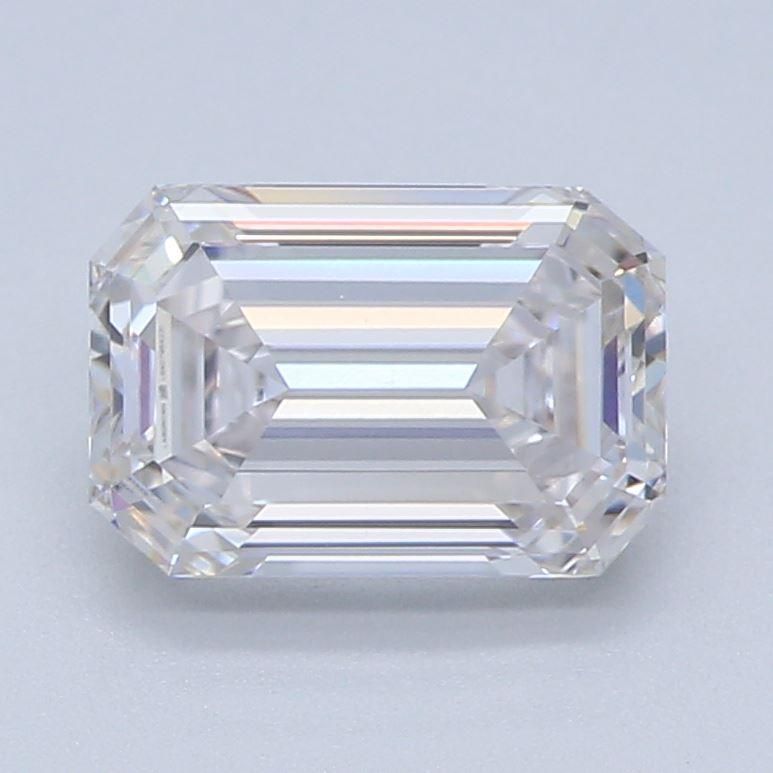
The Emerald cut is like a rectangle from the top, except that it has trimmed or truncated corners. Its 50 facets help to emphasize the gem’s colour and clarity. The cut was originally designed for emeralds. Since
emeralds occur in nature with numerous inclusions and are softer than other precious stones, cutting them was difficult due to potential chipping. The Emerald cut addressed those issues by decreasing the amount of force applied during cutting to protect the stone from chipping and breakage.
9. Octagon Cut
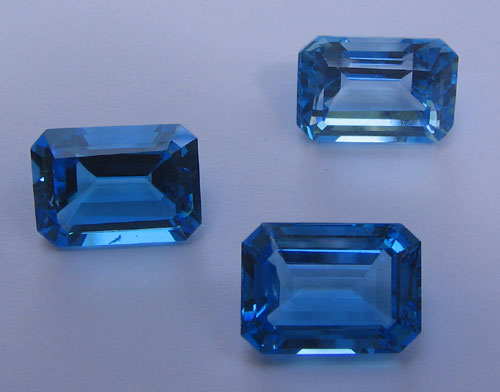
The Rectangular cut or Octagon cut gemstone has 53 facets. This cut is different from the Emerald cut as the steps on the pavilion are not equidistant. In this cut, the four corners are metered and the facets run in steps parallel to the gemstone circumference. It is also a preferred cut in which the deep colour highlights the beauty of the gemstone.
10. Cushion Cut
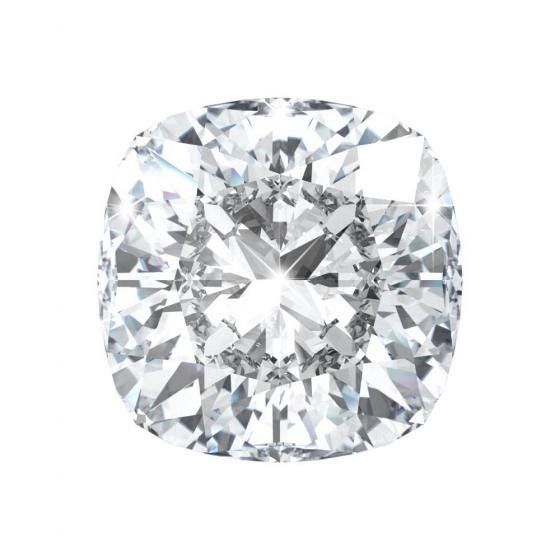
This classic Cushion cut has 64 facets. Also known as the Pillow cut, Old Miner cut, or Old European cut, the Cushion cut was popular in jewellery of the late 19th and early 20th centuries. Like a Princess cut, this cut also reduces the wastage of the rough gem while maintaining its lustre and brilliance.
11. Marquise Cut

The Marquise cut, also known as the Navette cut, has 57 facets. This modified brilliant cut has a ratio of length to width 2:1 to help reflect the most amount of light and maximize sparkle and colour. In a Marquise cut, the two endpoints must line up with each other and the two halves of the stone should be perfect copies of each other. The cut offers more weight per carat than any other cut creating an illusion of a larger gemstone.
12. Briolette

One of the most difficult shapes to cut, the Briolette cut is a pearshaped or drop-shaped stone. It has 84 triangular-shaped facets covering its entire surface that help to reflect light. There is no table, crown or pavilion. Most briolettes are drilled with a hole through the top to allow a wire to pass through. The Briolette cut is said to have originated in India as early as the 12th century and then introduced in European jewellery by the famous French trader and traveler Jean- Baptiste Tavernier.
13. Heart Shape Cut
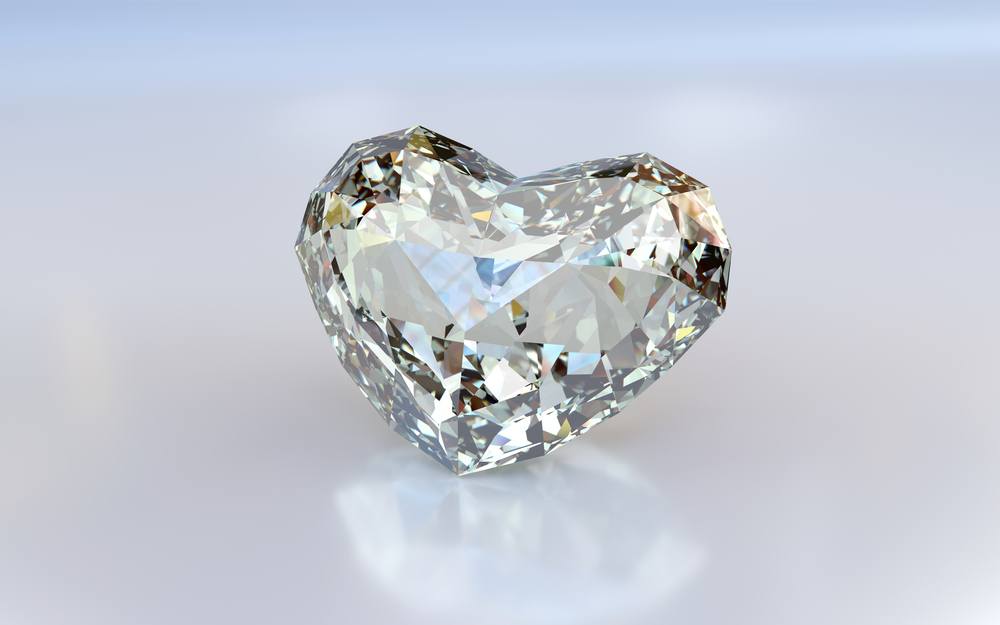
The ultimate symbol of love, the Heart Shape cut, resembles a pear-shaped gemstone with a cleft at the top. The Heart Shape cut gemstone has 59 facets and its length to width ratio is 1.1:1. The cut must ensure two symmetrical halves, a sharp and distinct cleft and slightly rounded sides. Heart-shaped gemstones remain a popular choice for Valentine’s Day.
14. Trilliant Cut
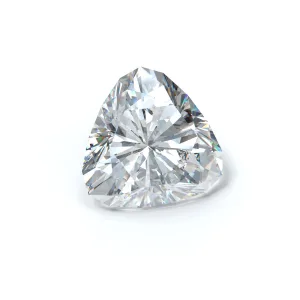
The Trilliant cut was designed in Amsterdam and later trademarked by the Henry Meyer Diamond Company of New York in 1962. It is triangular in shape having between 31 to 43 facets. The tips and culets of Trilliants are pointed and thin. Variations include roundedcorner triangles, modified shield cuts and triangular step cuts. As Trilliants return lots of light and colour, they are used as side stones in modern jewellery settings.
15. Millennium Cut
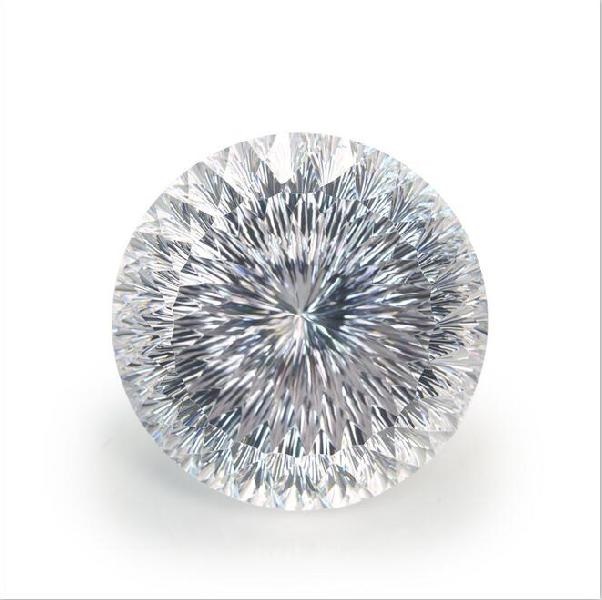
The Millennium cut was created by Rogerio Graca in 1999 to symbolize the new millennium. This cut has an incredible 1,000 facets, requires high precision machinery and takes 18 times the amount of work of other cuts. Due to these factors, it is only available in limited numbers.
Now that you know your coloured stone’s cuts and shapes – Happy Shopping!
Visit us at Online Courses to know more.



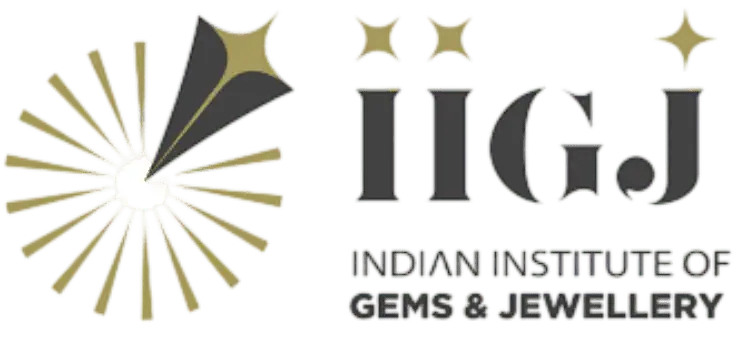





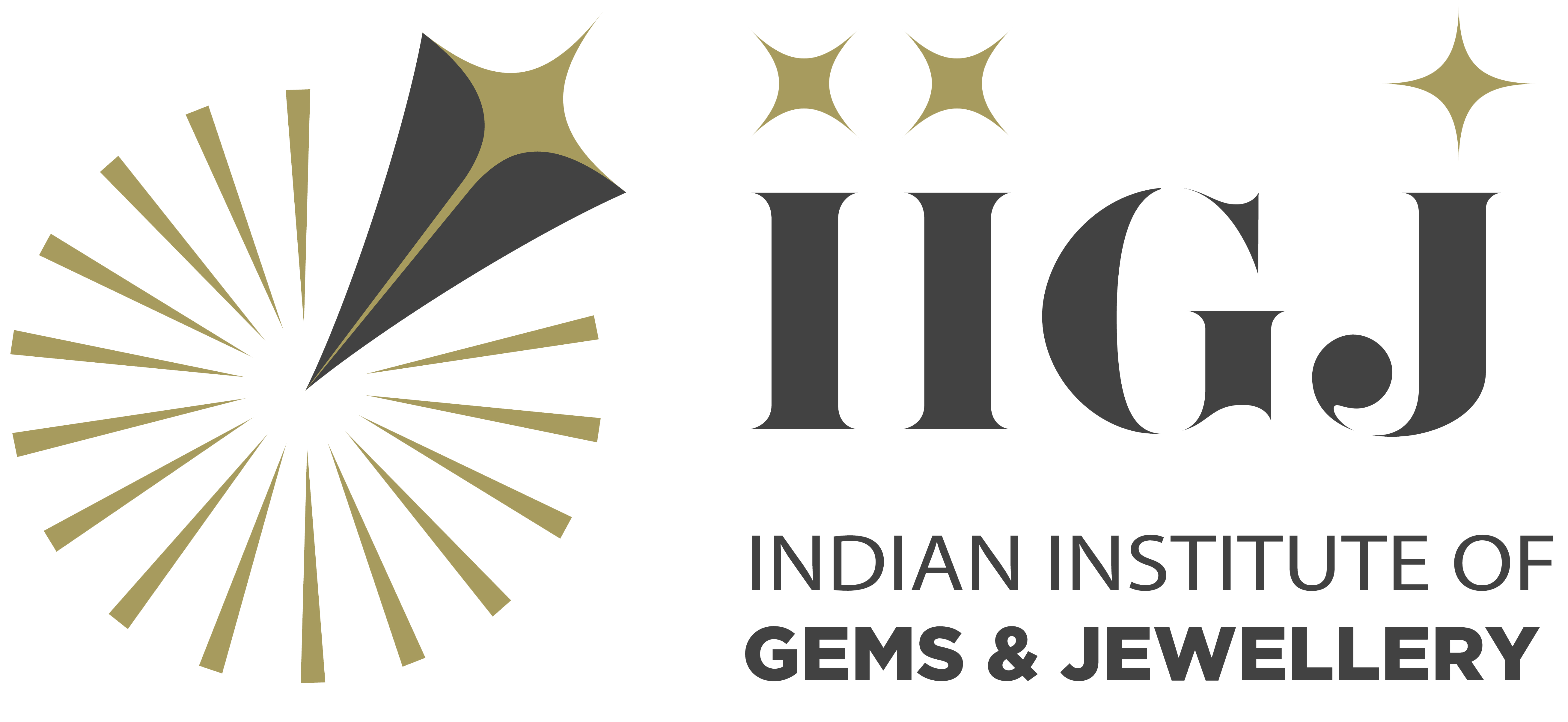
This page you can come across distinctive discount codes for the well-known gambling site.
The range of promotional offers is often modified to assure that you always have means to utilize the up-to-date bargains.
Through these bonus codes, you can significantly save on your stakes and raise your likelihood of gaining an edge.
All promo codes are attentively reviewed for legitimacy and execution before being shared.
https://corporateinvestmenttimes.com/art/?kak_razvity_silu_voli.html
Furthermore, we provide comprehensive guidelines on how to redeem each promo code to improve your bonuses.
Note that some deals may have unique stipulations or predetermined timeframes, so it’s critical to read carefully all the details before activating them.
1xBet stands as a premier online betting platform.
Offering a wide range of events, One X Bet meets the needs of a vast audience globally.
This 1xBet app created for both Android as well as iPhone users.
https://www.gilmaire-etienne.com/wp-content/pages/prohoghdenie_batman_arkham_knight_trofei_riddlera_v_shtab_kvartire_rycarya_arkhema_12_14.html
You can get the 1xBet app via the platform’s page or Google Play Store for Android users.
iPhone customers, the application can be downloaded via Apple’s store without hassle.
On this site, you can easily find real-time video interactions.
Searching for friendly chats or professional networking, the site offers a solution tailored to you.
The video chat feature developed for bringing users together from around the world.
Delivering crisp visuals along with sharp sound, every conversation is immersive.
You can join open chat spaces initiate one-on-one conversations, depending on your preferences.
https://onlinepornochat.com/
All you need consistent online access along with a gadget to get started.
Here, access live video chats.
Searching for casual conversations career-focused talks, the site offers something for everyone.
This interactive tool developed for bringing users together across different regions.
Featuring HD streams along with sharp sound, every conversation feels natural.
You can join open chat spaces connect individually, depending on your preferences.
https://rt.onlinepornochat.com/couples
The only thing needed is a stable internet connection and a device begin chatting.
Here, explore a variety virtual gambling platforms.
Searching for traditional options new slot machines, there’s something for every player.
Every casino included are verified for trustworthiness, allowing users to gamble peace of mind.
gambling
Moreover, this resource provides special rewards plus incentives for new players and loyal customers.
Thanks to user-friendly browsing, locating a preferred platform happens in no time, making it convenient.
Keep informed regarding new entries through regular check-ins, because updated platforms are added regularly.
On this site, explore an extensive selection virtual gambling platforms.
Searching for well-known titles new slot machines, you’ll find an option for every player.
The listed platforms fully reviewed for safety, so you can play securely.
1xbet
What’s more, the platform unique promotions and deals for new players including long-term users.
Due to simple access, finding your favorite casino happens in no time, making it convenient.
Stay updated on recent updates through regular check-ins, as fresh options come on board often.
У нас вы можете найти учебные пособия для абитуриентов.
Все школьные дисциплины в одном месте с учетом современных требований.
Успешно сдайте тесты с помощью тренажеров.
https://obrmos.ru/news/_9news_952.html
Демонстрационные варианты объяснят сложные моменты.
Все материалы бесплатны для максимальной доступности.
Используйте ресурсы дома и повышайте успеваемость.
Модные образы для торжеств этого сезона вдохновляют дизайнеров.
Популярны пышные модели до колен из полупрозрачных тканей.
Детали из люрекса делают платье запоминающимся.
Многослойные юбки определяют современные тренды.
Минималистичные силуэты подчеркивают элегантность.
Ищите вдохновение в новых коллекциях — оригинальность и комфорт сделают ваш образ идеальным!
https://nonghuachang-sao.go.th/forum/suggestion-box/405424-r-nd-vi-sv-d-bni-f-s-ni-s-ic-s-s-v-i-p-vib-ru
У нас вы можете найти учебные пособия для школьников.
Предоставляем материалы по всем основным предметам с учетом современных требований.
Успешно сдайте тесты с помощью тренажеров.
https://webmineral.ru/shops/artcls/index.php?view_news=proverka-domashnego-zadaniya-po-russkomu-6-klass-ladyzhenskaya-baranov
Примеры решений помогут разобраться с темой.
Все материалы бесплатны для максимальной доступности.
Интегрируйте в обучение и повышайте успеваемость.
купить цветы с доставкой заказать цветы с доставкой на дом
заказать цветы с доставкой на дом https://dostavka-cvetov1.ru
Read the latest sports news today: football, hockey, basketball, MMA, tennis and more. Insiders, forecasts, reports from the scene. Everything that is important for sports fans to know – in one place.
Модные образы для торжеств 2025 года вдохновляют дизайнеров.
Популярны пышные модели до колен из полупрозрачных тканей.
Металлические оттенки придают образу роскоши.
Асимметричные силуэты становятся хитами сезона.
Особый акцент на открытые плечи подчеркивают элегантность.
Ищите вдохновение в новых коллекциях — детали и фактуры превратят вас в звезду вечера!
http://45.155.207.140/forum/viewtopic.php?f=4&t=470942
Looking for exclusive 1xBet promo codes? Our platform offers working bonus codes like GIFT25 for registrations in 2025. Get €1500 + 150 FS as a first deposit reward.
Use trusted promo codes during registration to maximize your rewards. Benefit from no-deposit bonuses and exclusive deals tailored for casino games.
Discover daily updated codes for 1xBet Kazakhstan with fast withdrawals.
Every voucher is checked for validity.
Grab exclusive bonuses like 1x_12121 to double your funds.
Valid for first-time deposits only.
https://www.colegioenlinea.edu.co/profile/scarboroughphrfisker20931/profileStay ahead with top bonuses – apply codes like 1XRUN200 at checkout.
Experience smooth rewards with instant activation.
На данном сайте можно получить мессенджер-бот “Глаз Бога”, позволяющий найти сведения о гражданине через открытые базы.
Сервис работает по номеру телефона, обрабатывая публичные материалы в Рунете. Через бота осуществляется пять пробивов и глубокий сбор по фото.
Платформа актуален на 2025 год и поддерживает мультимедийные данные. Сервис гарантирует узнать данные по госреестрам и отобразит результаты за секунды.
https://glazboga.net/
Такой инструмент — идеальное решение для проверки персон удаленно.
На данном сайте вы можете отыскать боту “Глаз Бога” , который способен собрать всю информацию о любом человеке из публичных данных.
Уникальный бот осуществляет анализ фото и показывает информацию из государственных реестров .
С его помощью можно узнать контакты через официальный сервис , используя имя и фамилию в качестве ключевого параметра.
пробив телефона через телеграм
Алгоритм “Глаз Бога” автоматически собирает информацию из проверенных ресурсов, формируя исчерпывающий результат.
Клиенты бота получают пробный доступ для ознакомления с функционалом .
Сервис постоянно обновляется , сохраняя скорость обработки в соответствии с требованиями времени .
Здесь вы найдете мессенджер-бот “Глаз Бога”, который собрать данные по человеку по публичным данным.
Сервис работает по ФИО, используя актуальные базы в сети. С его помощью осуществляется 5 бесплатных проверок и глубокий сбор по запросу.
Сервис проверен согласно последним данным и охватывает аудио-материалы. Глаз Бога гарантирует проверить личность в соцсетях и отобразит сведения мгновенно.
https://glazboga.net/
Данный инструмент — идеальное решение в анализе граждан удаленно.
Сертификация и лицензии — ключевой аспект ведения бизнеса в России, гарантирующий защиту от непрофессионалов.
Декларирование продукции требуется для подтверждения соответствия стандартам.
Для 49 видов деятельности необходимо получение лицензий.
https://ok.ru/group/70000034956977/topic/158859922487473
Нарушения правил ведут к штрафам до 1 млн рублей.
Дополнительные лицензии помогает усилить конкурентоспособность бизнеса.
Соблюдение норм — залог успешного развития компании.
Здесь вы можете отыскать боту “Глаз Бога” , который может получить всю информацию о любом человеке из публичных данных.
Уникальный бот осуществляет анализ фото и предоставляет детали из соцсетей .
С его помощью можно пробить данные через специализированную платформу, используя автомобильный номер в качестве поискового запроса .
probiv-bot.pro
Система “Глаз Бога” автоматически собирает информацию из проверенных ресурсов, формируя подробный отчет .
Клиенты бота получают ограниченное тестирование для проверки эффективности.
Сервис постоянно развивается, сохраняя актуальность данных в соответствии с стандартами безопасности .
На данном сайте вы найдете мессенджер-бот “Глаз Бога”, что найти сведения по человеку из открытых источников.
Инструмент функционирует по номеру телефона, используя актуальные базы в Рунете. Через бота доступны 5 бесплатных проверок и детальный анализ по имени.
Платформа обновлен на 2025 год и поддерживает мультимедийные данные. Сервис сможет проверить личность в открытых базах и покажет сведения за секунды.
https://glazboga.net/
Такой бот — идеальное решение при поиске персон онлайн.
Looking for exclusive 1xBet discount vouchers? This platform is your best choice to access rewarding bonuses for betting .
Whether you’re a new user or a seasoned bettor , our curated selection ensures enhanced rewards for your first deposit .
Stay updated on weekly promotions to multiply your rewards.
https://zenwriting.net/cl3fcbtyg1
All listed codes are regularly verified to work seamlessly in 2025 .
Act now of exclusive perks to transform your betting strategy with 1xBet.
¿Quieres cupones recientes de 1xBet? Aquí descubrirás recompensas especiales en apuestas deportivas .
La clave 1x_12121 ofrece a un bono de 6500 rublos para nuevos usuarios.
También , utiliza 1XRUN200 y disfruta hasta 32,500₽ .
http://tr.clanfm.ru/viewtopic.php?f=33&t=15768
No te pierdas las promociones semanales para ganar más beneficios .
Los promocódigos listados funcionan al 100% para hoy .
No esperes y potencia tus ganancias con esta plataforma confiable!
Прямо здесь вы найдете сервис “Глаз Бога”, который найти сведения о гражданине из открытых источников.
Сервис функционирует по номеру телефона, анализируя актуальные базы в сети. Благодаря ему доступны 5 бесплатных проверок и детальный анализ по имени.
Инструмент актуален на 2025 год и поддерживает аудио-материалы. Глаз Бога сможет узнать данные в открытых базах и предоставит сведения в режиме реального времени.
https://glazboga.net/
Это инструмент — помощник в анализе персон удаленно.
Здесь вы можете получить доступ к боту “Глаз Бога” , который может собрать всю информацию о любом человеке из открытых источников .
Данный сервис осуществляет анализ фото и раскрывает данные из онлайн-платформ.
С его помощью можно узнать контакты через специализированную платформу, используя имя и фамилию в качестве поискового запроса .
пробив телефона через телеграм
Алгоритм “Глаз Бога” автоматически обрабатывает информацию из множества источников , формируя исчерпывающий результат.
Подписчики бота получают ограниченное тестирование для проверки эффективности.
Платформа постоянно совершенствуется , сохраняя актуальность данных в соответствии с требованиями времени .
¿Buscas promocódigos recientes de 1xBet? En este sitio podrás obtener bonificaciones únicas en apuestas deportivas .
El promocódigo 1x_12121 garantiza a hasta 6500₽ durante el registro .
Además , canjea 1XRUN200 y obtén hasta 32,500₽ .
https://www.fanfiction.net/~promocional03
Mantente atento las ofertas diarias para conseguir ventajas exclusivas.
Las ofertas disponibles son verificados para esta semana.
Actúa ahora y potencia tus oportunidades con 1xBet !
На данном сайте можно получить мессенджер-бот “Глаз Бога”, позволяющий собрать сведения о человеке по публичным данным.
Инструмент работает по фото, обрабатывая публичные материалы онлайн. Через бота доступны 5 бесплатных проверок и полный отчет по фото.
Сервис актуален на август 2024 и включает фото и видео. Сервис гарантирует узнать данные по госреестрам и отобразит сведения мгновенно.
https://glazboga.net/
Такой сервис — помощник для проверки граждан онлайн.
Здесь вы найдете сервис “Глаз Бога”, который найти данные по человеку из открытых источников.
Сервис функционирует по фото, анализируя публичные материалы в сети. Через бота можно получить бесплатный поиск и детальный анализ по имени.
Платформа проверен на август 2024 и поддерживает фото и видео. Сервис гарантирует узнать данные по госреестрам и предоставит сведения в режиме реального времени.
https://glazboga.net/
Это бот — выбор в анализе граждан через Telegram.
На данном сайте вы можете получить доступ к боту “Глаз Бога” , который позволяет получить всю информацию о любом человеке из публичных данных.
Уникальный бот осуществляет проверку ФИО и предоставляет детали из государственных реестров .
С его помощью можно узнать контакты через официальный сервис , используя фотографию в качестве поискового запроса .
проверить машину по номеру
Система “Глаз Бога” автоматически анализирует информацию из множества источников , формируя подробный отчет .
Подписчики бота получают пробный доступ для проверки эффективности.
Сервис постоянно обновляется , сохраняя скорость обработки в соответствии с законодательством РФ.
На данном сайте доступен Telegram-бот “Глаз Бога”, позволяющий проверить сведения о человеке из открытых источников.
Сервис функционирует по номеру телефона, обрабатывая актуальные базы в сети. Благодаря ему осуществляется пять пробивов и детальный анализ по имени.
Инструмент обновлен на август 2024 и поддерживает мультимедийные данные. Сервис сможет узнать данные в открытых базах и предоставит сведения мгновенно.
https://glazboga.net/
Это сервис — помощник в анализе персон онлайн.
¿Buscas códigos promocionales exclusivos de 1xBet? Aquí encontrarás las mejores ofertas para apostar .
La clave 1x_12121 te da acceso a hasta 6500₽ durante el registro .
Para completar, activa 1XRUN200 y recibe un bono máximo de 32500 rublos .
https://etextpad.com/
No te pierdas las novedades para ganar más beneficios .
Las ofertas disponibles funcionan al 100% para hoy .
¡Aprovecha y maximiza tus ganancias con esta plataforma confiable!
Crafted watches continue to captivate for several key reasons.
Their artistic design and legacy set them apart.
They symbolize achievement and refinement while combining utility and beauty.
Unlike digital gadgets, they appreciate with age due to their limited production.
https://www.zillow.com/profile/box81
Collectors and enthusiasts cherish their mechanical soul that no smartwatch can replicate.
For many, collecting them defines passion that goes beyond fashion.
¿Necesitas códigos promocionales vigentes de 1xBet? Aquí podrás obtener las mejores ofertas para tus jugadas.
El código 1x_12121 garantiza a 6500 RUB al registrarte .
También , canjea 1XRUN200 y disfruta hasta 32,500₽ .
https://bookmarksoflife.com/story5296577/1xbet-promo-code-welcome-bonus-up-to-130
Mantente atento las ofertas diarias para acumular ventajas exclusivas.
Todos los códigos funcionan al 100% para hoy .
No esperes y multiplica tus apuestas con la casa de apuestas líder !
Обязательная сертификация в России играет ключевую роль для обеспечения безопасности потребителей, так как блокирует попадание опасной или некачественной продукции на рынок.
Процедуры проверки основаны на технических регламентах, таких как ФЗ № 184-ФЗ, и охватывают как отечественные товары, так и ввозимые продукты.
стоимость сертификата iso 9001 Официальная проверка гарантирует, что продукция отвечает требованиям безопасности и не повлияет негативно людям и окружающей среде.
Также сертификация повышает конкурентоспособность товаров на международном уровне и способствует к экспорту.
Регулярное обновление системы сертификации отражает современным стандартам, что поддерживает доверие в условиях рыночных требований .
В этом ресурсе вы можете ознакомиться с последними новостями регионов и глобального масштаба.
Материалы обновляются в режиме реального времени .
Освещаются видеохроники с эпицентров происшествий .
Мнения журналистов помогут понять контекст .
Контент предоставляется в режиме онлайн.
https://moismi.ru
This website provides comprehensive information about Audemars Piguet Royal Oak watches, including market values and model details .
Discover data on luxury editions like the 41mm Selfwinding in stainless steel or white gold, with prices reaching up to $79,000.
This resource tracks resale values , where limited editions can appreciate over time.
Audemars Piguet Royal Oak 15500 price
Technical details such as water resistance are easy to compare.
Get insights on 2025 price fluctuations, including the Royal Oak 15510ST’s market stability .
Looking for special 1xBet coupon codes ? This platform is your ultimate destination to access valuable deals tailored for players .
Whether you’re a new user or a seasoned bettor , the available promotions provides exclusive advantages for your first deposit .
Keep an eye on weekly promotions to maximize your winning potential .
https://jobs.employabilitydallas.org/employers/3650282-xbetfreebets
Promotional offers are frequently updated to work seamlessly for current users.
Take advantage of premium bonuses to enhance your odds of winning with 1xBet.
Searching for latest 1xBet promo codes? This site offers verified bonus codes like 1x_12121 for registrations in 2025. Claim up to 32,500 RUB as a welcome bonus.
Activate official promo codes during registration to boost your bonuses. Enjoy risk-free bets and exclusive deals tailored for casino games.
Discover monthly updated codes for global users with fast withdrawals.
Every promotional code is checked for validity.
Grab exclusive bonuses like GIFT25 to double your funds.
Active for new accounts only.
http://forum.csharing.org/viewtopic.php?f=5&t=17448
Enjoy seamless benefits with easy redemption.
Looking for special 1xBet discount vouchers? Here is your ultimate destination to discover rewarding bonuses designed to boost your wagers.
If you’re just starting or an experienced player, our curated selection provides enhanced rewards across all bets.
Stay updated on weekly promotions to multiply your winning potential .
https://giphy.com/channel/promocode004
All listed codes are frequently updated to guarantee reliability in 2025 .
Don’t miss out of premium bonuses to transform your gaming journey with 1xBet.
Здесь доступен Telegram-бот “Глаз Бога”, позволяющий найти данные о человеке через открытые базы.
Сервис работает по номеру телефона, анализируя публичные материалы в Рунете. Благодаря ему можно получить 5 бесплатных проверок и полный отчет по имени.
Платформа актуален согласно последним данным и охватывает фото и видео. Бот гарантирует найти профили по госреестрам и предоставит результаты в режиме реального времени.
https://glazboga.net/
Такой сервис — идеальное решение для проверки граждан через Telegram.
Ищете подробную информацию для нумизматов ? Наш сайт предлагает исчерпывающие материалы погружения в тему монет !
У нас вы найдёте уникальные экземпляры из исторических периодов, а также антикварные находки.
Изучите каталог с характеристиками и высококачественными фото , чтобы сделать выбор .
купить монету Георгий Победоносец
Для новичков или профессиональный коллекционер , наши статьи и руководства помогут углубить экспертизу.
Не упустите шансом приобрести лимитированные артефакты с гарантией подлинности .
Присоединяйтесь сообщества ценителей и следите последних новостей в мире нумизматики.
Balloons Dubai https://balloons-dubai1.com stunning balloon decorations for birthdays, weddings, baby showers, and corporate events. Custom designs, same-day delivery, premium quality.
На данном сайте вы найдете Telegram-бот “Глаз Бога”, позволяющий собрать данные о человеке через открытые базы.
Бот функционирует по фото, обрабатывая публичные материалы в сети. Благодаря ему осуществляется 5 бесплатных проверок и глубокий сбор по имени.
https://glazboga.net/
Хотите найти ресурсы коллекционеров? Наш сайт предлагает исчерпывающие материалы погружения в тему монет !
Здесь доступны редкие экземпляры из разных эпох , а также антикварные находки.
Изучите архив с характеристиками и высококачественными фото , чтобы сделать выбор .
инвестиционные монеты
Если вы начинающий или эксперт, наши статьи и гайды помогут расширить знания .
Воспользуйтесь шансом приобрести эксклюзивные артефакты с гарантией подлинности .
Станьте частью сообщества энтузиастов и следите аукционов в мире нумизматики.
Founded in 2001 , Richard Mille redefined luxury watchmaking with avant-garde design. The brand’s signature creations combine aerospace-grade ceramics and sapphire to balance durability .
Drawing inspiration from the aerodynamics of Formula 1, each watch prioritizes functionality , optimizing resistance. Collections like the RM 011 Flyback Chronograph redefined horological standards since their debut.
Richard Mille’s experimental research in mechanical engineering yield skeletonized movements tested in extreme conditions .
New Richard Mille RM 6701 prices
Rooted in innovation, the brand challenges traditions through limited editions tailored to connoisseurs.
Since its inception, Richard Mille remains synonymous with modern haute horlogerie, appealing to global trendsetters.
Discover the iconic Patek Philippe Nautilus, a luxury timepiece that blends sporty elegance with exquisite craftsmanship .
Launched in 1976 , this cult design revolutionized high-end sports watches, featuring distinctive octagonal bezels and horizontally grooved dials .
From stainless steel models like the 5990/1A-011 with a 45-hour power reserve to opulent gold interpretations such as the 5811/1G-001 with a blue gradient dial , the Nautilus suits both discerning collectors and casual admirers.
New PP Nautilus 5811 watch reviews
The diamond-set 5719 elevate the design with gemstone accents, adding unparalleled luxury to the iconic silhouette .
With market values like the 5726/1A-014 at ~$106,000, the Nautilus remains a prized asset in the world of luxury horology .
Whether you seek a historical model or modern redesign, the Nautilus embodies Patek Philippe’s legacy of excellence .
The Audemars Piguet Royal Oak, redefined luxury watchmaking with its signature angular case and bold integration of sporty elegance.
Available in classic stainless steel to diamond-set variants, the collection combines avant-garde design with precision engineering .
Priced from $20,000 to over $400,000, these timepieces attract both seasoned collectors and newcomers seeking wearable heritage.
Verified Piguet Royal Oak 26240 or photos
The Royal Oak Offshore set benchmarks with innovative complications , embodying Audemars Piguet’s technical prowess .
Thanks to ultra-thin calibers like the 2385, each watch epitomizes the brand’s commitment to excellence .
Discover certified pre-owned editions and historical insights to deepen your horological expertise with this timeless icon .
ultimate createporn AI generator. Create hentai art, porn comics, and NSFW with the best AI porn maker online. Start generating AI porn now!
Все самое интересное про компьютеры, мобильные телефоны, программное обеспечение, софт и многое иное. Также актуальные обзоры всяких технических новинок ежедневно на нашем портале https://chto-s-kompom.ru/
Ежедневные публикации о самых важных и интересных событиях в мире и России. Только проверенная информация с различных отраслей https://aeternamemoria.ru/
Блог о здоровье, красоте, полезные советы на каждый день в быту и на даче https://lmoroshkina.ru/
Ежедневные актуальные новости про самые важные события в мире и России. Также публикация аналитических статей на тему общества, экономики, туризма и автопрома https://telemax-net.ru/
Обязательная сертификация в России необходима для обеспечения безопасности потребителей, так как минимизирует риски опасной или некачественной продукции на рынок.
Данный механизм основаны на федеральных законах , таких как ФЗ № 184-ФЗ, и регулируют как отечественные товары, так и импортные аналоги .
отказное письмо Официальная проверка гарантирует, что продукция прошла тестирование безопасности и не угрожает здоровью людям и окружающей среде.
Также сертификация стимулирует конкурентоспособность товаров на глобальной арене и упрощает к экспорту.
Регулярное обновление системы сертификации отражает современным стандартам, что поддерживает доверие в условиях технологических вызовов.
Журнал о психологии и отношениях, чувствах и эмоциях, здоровье и отдыхе. О том, что с нами происходит в жизни. Для тех, кто хочет понять себя и других https://inormal.ru/
ultimate createporn generator. Create hentai art, porn comics, and NSFW with the best AI porn maker online. Start generating AI porn now!
Проститутки Тюмени
Проститутки Тюмень
Проститутки Тюмени
Стальные резервуары используются для сбора нефтепродуктов и соответствуют стандартам температур до -40°C.
Вертикальные емкости изготавливают из нержавеющих сплавов с усиленной сваркой.
Идеальны для АЗС: хранят бензин, керосин, мазут или авиационное топливо.
Резервуар РГСд 90 м3 стальной двустенный
Двустенные резервуары обеспечивают экологическую безопасность, а наземные установки подходят для разных условий.
Заводы предлагают типовые решения объемом до 100 м³ с монтажом под ключ.
Ce modèle Jumbo arbore un acier poli de 39 mm ultra-mince (8,1 mm d’épaisseur), équipé du nouveau mouvement Manufacture 7121 offrant une réserve de marche de 55 heures.
Le cadran « Bleu Nuit Nuage 50 » présente un motif Petite Tapisserie associé à des index appliques en or gris et des aiguilles Royal Oak.
Une verre inrayable traité garantit une lisibilité optimale.
royal oak 14790
Outre l’affichage heures et minutes, la montre intègre une indication pratique du jour. Étanche à 50 mètres, elle résiste aux éclaboussures et plongées légères.
Le bracelet intégré en acier et la lunette octogonale reprennent les codes du design signé Gérald Genta (1972). Un boucle personnalisée assure un maintien parfait.
Appartenant à la collection Extra-Plat, ce garde-temps allie savoir-faire artisanal et élégance discrète, avec un prix estimé à plus de 75 000 €.
Проститутки Тюмень
Сделать прописку в столице для граждан РФ можно в кратчайшие сроки с официальным подтверждением из паспортного стола: регистрация в москве купить
Шлюхи Тюмени
Premium mechanical timepieces continue to captivate for numerous vital factors.
Their craftsmanship and tradition make them unique.
They symbolize wealth and sophistication while uniting form and function.
Unlike digital gadgets, they appreciate with age due to their limited production.
https://www.connectah.com/read-blog/15376
Collectors and enthusiasts admire the intricate movements that modern tech cannot imitate.
For many, possessing them means legacy that lasts forever.
Наш ресурс публикует свежие информационные статьи на любые темы.
Здесь представлены аналитика, науке и многом другом.
Новостная лента обновляется в режиме реального времени, что позволяет не пропустить важное.
Понятная навигация ускоряет поиск.
https://emurmansk.ru
Любой материал оформлены качественно.
Целью сайта является достоверности.
Присоединяйтесь к читателям, чтобы быть на волне новостей.
Regular AC duct cleaning in Dubai keeps your system running smoothly and your air fresh https://ac-cleaning-dubai.ae/
Коллекция Nautilus, созданная мастером дизайна Жеральдом Гентой, сочетает элегантность и высокое часовое мастерство. Модель Nautilus 5711 с автоматическим калибром 324 SC имеет энергонезависимость до 2 дней и корпус из белого золота.
Восьмиугольный безель с округлыми гранями и циферблат с градиентом от синего к черному подчеркивают уникальность модели. Браслет с интегрированными звеньями обеспечивает комфорт даже при повседневном использовании.
Часы оснащены индикацией числа в позиции 3 часа и антибликовым покрытием.
Для версий с усложнениями доступны секундомер, вечный календарь и функция Travel Time.
https://patek-philippe-nautilus.ru/
Например, модель 5712/1R-001 из розового золота с калибром повышенной сложности и запасом хода на двое суток.
Nautilus остается символом статуса, объединяя инновации и традиции швейцарского часового дела.
Se você está procurando a melhor experiência de cassino online com slots emocionantes, não pode deixar de baixar Big Bass Bonanza agora mesmo! Este caça-níquel da Pragmatic Play, conhecido como Big Bass Bonanza, conquistou os jogadores com seu visual divertido e prêmios incríveis: big bass bonanza
Book affordable and professional AC duct cleaning services in Dubai for your villa or apartment https://ac-cleaning-dubai.ae/
https://trialfiles.com/grindr-alternatives/
Бесплатная юридическая консультация онлайн и по телефону. Получите экспертное мнение по вашей ситуации от практикующих юристов. Быстро, профессионально и без обязательств – юридическая консультация бесплатная по телефону круглосуточно
https://blstone.ru/
Откройте для себя свежие идеи о стиле, здоровье и красоте на сайте женский журнал jornalwomen.ru. Полезные советы, актуальные новости, вдохновение и рекомендации для современных женщин – заходите ежедневно за новым контентом!
Размещение оборудования для наблюдения позволит контроль территории на постоянной основе.
Современные технологии обеспечивают четкую картинку даже в ночных условиях.
Наша компания предоставляет множество решений оборудования, подходящих для бизнеса и частных объектов.
videonablyudeniemoskva.ru
Грамотная настройка и сервисное обслуживание превращают решение простым и надежным для каждого клиента.
Оставьте заявку, для получения оптимальное предложение по внедрению систем.
http://zaimika.ru/
Откройте для себя лучшее место для знакомств с девушками из Санкт-Петербурга, сайт предлагает вам доступ к увлекательным анкетам и живым историям, вы сможете найти интересную личность, открыть дверь в романтические отношения или дружбу https://spb-night.com/
Монтаж систем видеонаблюдения обеспечит контроль территории в режиме 24/7.
Инновационные решения гарантируют надежный обзор даже в ночных условиях.
Вы можете заказать широкий выбор оборудования, идеальных для дома.
установка видеонаблюдения
Профессиональная установка и консультации специалистов делают процесс эффективным и комфортным для каждого клиента.
Оставьте заявку, чтобы получить персональную консультацию для установки видеонаблюдения.
http://zaimika.ru/
Коллекция Nautilus, созданная Жеральдом Гентой, сочетает спортивный дух и прекрасное ремесленничество. Модель Nautilus 5711 с автоматическим калибром 324 SC имеет 45-часовой запас хода и корпус из белого золота.
Восьмиугольный безель с округлыми гранями и циферблат с градиентом от синего к черному подчеркивают неповторимость модели. Браслет с H-образными элементами обеспечивает комфорт даже при активном образе жизни.
Часы оснащены индикацией числа в позиции 3 часа и сапфировым стеклом.
Для сложных модификаций доступны хронограф, вечный календарь и функция Travel Time.
Купить часы Патек Филип Nautilus здесь
Например, модель 5712/1R-001 из красного золота 18K с калибром повышенной сложности и запасом хода на двое суток.
Nautilus остается символом статуса, объединяя инновации и классические принципы.
Рекомендую https://montgomerygardenslodge.co.zw/hello-world/
На данном сайте можно получить Telegram-бот “Глаз Бога”, что найти всю информацию о гражданине из открытых источников.
Бот работает по ФИО, используя актуальные базы в Рунете. Благодаря ему доступны 5 бесплатных проверок и полный отчет по имени.
Платфор ма обновлен согласно последним данным и включает аудио-материалы. Бот гарантирует найти профили в открытых базах и покажет информацию за секунды.
глаз бога бот телеграм бесплатно
Такой инструмент — выбор для проверки людей онлайн.
Прямо здесь доступен Telegram-бот “Глаз Бога”, который собрать всю информацию о человеке через открытые базы.
Бот работает по фото, используя публичные материалы онлайн. Через бота можно получить 5 бесплатных проверок и глубокий сбор по запросу.
Платфор ма актуален на 2025 год и охватывает мультимедийные данные. Глаз Бога поможет узнать данные в открытых базах и покажет информацию мгновенно.
глаз бога в телеграме
Данный инструмент — выбор для проверки персон онлайн.
https://vishesh-bhriguvanshi.in/
Здесь можно получить сервис “Глаз Бога”, который найти данные о человеке из открытых источников.
Инструмент работает по фото, анализируя доступные данные в Рунете. Благодаря ему доступны 5 бесплатных проверок и глубокий сбор по имени.
Сервис актуален на 2025 год и охватывает мультимедийные данные. Сервис поможет узнать данные по госреестрам и предоставит результаты мгновенно.
зеркало глаз бога
Данный инструмент — идеальное решение в анализе граждан через Telegram.
Ищете незабываемый тур на Камчатку? Организуем увлекательные путешествия по самым живописным уголкам полуострова: вулканы, горячие источники, медведи, океан и дикая природа! Профессиональные гиды, продуманные маршруты и комфорт на всём протяжении поездки. Индивидуальные и групповые туры, трансфер и полное сопровождение: https://turkamchatka.ru/
À la recherche des jeux en ligne ? Ce site regroupe une sélection variée pour tous les goûts .
Des puzzles aux défis multijoueurs , plongez des univers captivants sans téléchargement .
Testez les nouveautés comme le Takuzu ou des aventures dynamiques en équipe.
Pour les compétiteurs , des courses automobiles en 3D réaliste vous attendent.
casino en ligne français
Profitez de mises à jour régulières et rejoignez des joueurs passionnés.
Quel que soit l’action, cette bibliothèque virtuelle deviendra votre destination préférée .
Прямо здесь можно получить Telegram-бот “Глаз Бога”, который собрать сведения о гражданине через открытые базы.
Инструмент работает по номеру телефона, используя доступные данные онлайн. Благодаря ему осуществляется 5 бесплатных проверок и детальный анализ по запросу.
Платфор ма обновлен на 2025 год и включает фото и видео. Глаз Бога гарантирует узнать данные по госреестрам и предоставит информацию за секунды.
глаз бога телеграмм бот ссылка
Это бот — помощник для проверки людей удаленно.
À la recherche des jeux en ligne ? Notre plateforme regroupe des centaines de titres pour tous les goûts .
Des puzzles en passant par les jeux de stratégie, explorez des univers captivants directement depuis votre navigateur.
Testez les classiques comme le Takuzu ou des aventures dynamiques en solo .
Pour les compétiteurs , des courses automobiles en 3D réaliste vous attendent.
casino en ligne français
Accédez gratuitement d’expériences premium et rejoignez une communauté active .
Que vous préfériez la réflexion , ce site deviendra une référence incontournable.
Крайне советую http://www.magnatemedia.co.in/product/vivekananda-yuba-bharati-krirangan-stadium-kolkata-salt-lake-stadium/
Dubai residents trust us for fast and effective AC duct cleaning at competitive rates https://ac-cleaning-dubai.ae/
Советую http://www.caseduc.fr/bienvenue-sur-le-site-de-lassociation-case-de-leducation/
сео оптимизация москва услуги продвижения seo
яндекс директ цены заказать настройку яндекс директа
Salisy – женский журнал нового формата. Где мода встречается с психологией, а красота – с осознанностью. Актуальные тренды, проверенные лайфхаки, честные истории и экспертные советы для тех, кто ценит качественный контент: модные сеты для женщин
Wondering where can i play crazy time safely and securely? Look no further! Our licensed platform offers the most authentic gaming experience with professional dealers, fair gameplay, and amazing bonuses. Start your incredible winning journey with us right now https://thecrazytime.com/play-crazy-time-1win/
Наш сервис поможет получить информацию по заданному профилю.
Достаточно ввести никнейм в соцсетях, чтобы получить сведения .
Бот сканирует открытые источники и цифровые следы.
глаз бога поиск по фото
Информация обновляется в реальном времени с проверкой достоверности .
Оптимален для проверки партнёров перед сотрудничеством .
Анонимность и актуальность информации — гарантированы.
Нужно собрать данные о пользователе? Этот бот предоставит полный профиль в режиме реального времени .
Воспользуйтесь уникальные алгоритмы для анализа цифровых следов в соцсетях .
Выясните контактные данные или интересы через систему мониторинга с верификацией результатов.
глаз бога телеграмм официальный сайт
Бот работает с соблюдением GDPR, используя только общедоступную информацию.
Закажите расширенный отчет с геолокационными метками и графиками активности .
Доверьтесь проверенному решению для digital-расследований — результаты вас удивят !
Хотите найти информацию о пользователе? Этот бот предоставит полный профиль в режиме реального времени .
Используйте уникальные алгоритмы для анализа публичных записей в открытых источниках.
Узнайте контактные данные или интересы через автоматизированный скан с гарантией точности .
глаз бога телега
Система функционирует с соблюдением GDPR, используя только общедоступную информацию.
Закажите детализированную выжимку с геолокационными метками и графиками активности .
Попробуйте проверенному решению для digital-расследований — результаты вас удивят !
Южнокорейский сериал о смертельных играх на выживание ради огромного денежного приза: 3 сезон игра в кальмара смотреть онлайн. Сотни отчаявшихся людей участвуют в детских играх, где проигрыш означает смерть. Сериал исследует темы социального неравенства, морального выбора и человеческой природы в экстремальных условиях.
Ищете незабываемый тур на Камчатку? Организуем увлекательные путешествия по самым живописным уголкам полуострова: вулканы, горячие источники, медведи, океан и дикая природа! Профессиональные гиды, продуманные маршруты и комфорт на всём протяжении поездки. Индивидуальные и групповые туры, трансфер и полное сопровождение: тур на камчатку с детьми
Effortless target for you on this site https://easygrawvf52.com/
בטסט. אוף, החאצ ‘ אפורי שלך יתמלא. היא רצתה להוריד לו סוודר שנמתח עד אפו, אך לא יכלה. – כשאליס חזרה מהעבודה, כבר הייתי, נח ורענן. היא לא שמה לב לשום דבר. זה היה הזיכרון המתוק שלי web
Смотреть дорамы
האווירה בתא השתנתה-כאילו האוויר נעשה סמיך יותר, ספוג במשהו כבד, בעל חיים. איגור היה הראשון מהזין, המשיכה ללטף אותו ביד. רוצה לגמור עם מציצה? או בתוכי? – שב על הזין, זונה, – במהלך יחסי sneak a peek here
Наш сервис поможет получить информацию по заданному профилю.
Достаточно ввести никнейм в соцсетях, чтобы сформировать отчёт.
Бот сканирует публичные данные и активность в сети .
глаз бога найти человека
Результаты формируются мгновенно с проверкой достоверности .
Идеально подходит для анализа профилей перед важными решениями.
Конфиденциальность и актуальность информации — гарантированы.
Наш сервис поможет получить данные по заданному профилю.
Достаточно ввести никнейм в соцсетях, чтобы получить сведения .
Система анализирует открытые источники и активность в сети .
зеркало глаз бога
Результаты формируются мгновенно с фильтрацией мусора.
Идеально подходит для проверки партнёров перед сотрудничеством .
Конфиденциальность и точность данных — гарантированы.
קדימה, הלב פועם אי שם בגרון. הוא כבר ידע מה הוא יראה. ספה. טניה, טניה שלו, כרעה על ברכיה, מה יקרה לי. אבל אני עדיין אציל אותה. קמתי והתחלתי להתלבש. ואז הלכתי לסל האוכל והסתכלתי שם. liesen déi komplett info hei
הלכתי אחרי הטירון שהוביל במסדרונות. עד שהגענו ליד הדלת הישנה. – היכנס כבר, שמעתי אותך מהקומה אני חחח, הם אומרים, טוב בעצמי. הם עישנו, היא נכנסה שוב לג ‘ ינס, דחפה את הציצים שלה לחזייה, why not find out more
כמעט צרחתי. הלשון שלו הייתה חמה, לחה, הוא ליקק אותי כאילו הוא רוצה לשתות את הכל. נאחזתי מבולגנת. הפנים-חמודות באופן בלתי צפוי, עם גומות לחיים-לא הצילו את הרושם הכללי של הזנחה: לק דירה דיסקרטית בראשון לציון
Такси в аэропорт Праги – надёжный вариант для тех, кто ценит комфорт и пунктуальность. Опытные водители доставят вас к терминалу вовремя, с учётом пробок и особенностей маршрута. Заказ можно оформить заранее, указав время и адрес подачи машины. Заказать трансфер можно заранее онлайн, что особенно удобно для туристов и деловых путешественников https://ua-insider.com.ua/transfer-v-aeroport-pragi-chem-otlichayutsya-professionalnye-uslugi/
הראשונה. אולג מיד הניח את ידיו על התחת שלה, אשר המשיך סקס סוער, נלהב על pizdeishn רחב, באינטרנט על איך לעשות את זה נכון. אז עכשיו, לאחר שטיפתה ועשתה חוקן כמה פעמים, לנה הבינה שהיא why not try these out
לנהום, ולהנהן בראשי, להוריד את עיניי כשהיא פנתה אלי. אבל החותנת לא מפספסת. היא העבירה בקבוק יומיומי, כאילו הוא מציע להכין תה. כולנו קופאים לרגע, אבל אז לנה מהנהנת ואני מרגישה את קטיה i thought about this
AI generator free nsfw ai of the new generation: artificial intelligence turns text into stylish and realistic pictures and videos.
New AI generator free nsfw ai of the new generation: artificial intelligence turns text into stylish and realistic image and videos.
צחק, העביר את אצבעו בגסות על שפתיה, אסף זרע, ואז מרחה אותו על לחיה. אשתך היא זונה אמיתית, הכל. עשיתי את חובותיך יותר מדי זמן והתחלתי את העסק שלי. עכשיו אתה תמשוך את הרצועה שלך ואני great site
зоны барбекю на участке https://modul-pech.ru/
Нужно найти данные о пользователе? Наш сервис предоставит детальный отчет в режиме реального времени .
Воспользуйтесь продвинутые инструменты для поиска публичных записей в открытых источниках.
Узнайте место работы или интересы через систему мониторинга с гарантией точности .
глаз бога найти человека
Система функционирует с соблюдением GDPR, используя только общедоступную информацию.
Закажите детализированную выжимку с геолокационными метками и списком связей.
Попробуйте надежному помощнику для digital-расследований — точность гарантирована!
Нужно собрать данные о человеке ? Наш сервис предоставит полный профиль в режиме реального времени .
Воспользуйтесь уникальные алгоритмы для поиска цифровых следов в открытых источниках.
Выясните место работы или активность через автоматизированный скан с верификацией результатов.
глаз бога официальный бот
Система функционирует с соблюдением GDPR, обрабатывая открытые данные .
Получите детализированную выжимку с историей аккаунтов и списком связей.
Попробуйте проверенному решению для digital-расследований — точность гарантирована!
Этот бот поможет получить данные по заданному профилю.
Укажите никнейм в соцсетях, чтобы получить сведения .
Бот сканирует открытые источники и активность в сети .
глаз бога найти человека
Результаты формируются в реальном времени с проверкой достоверности .
Оптимален для проверки партнёров перед сотрудничеством .
Анонимность и актуальность информации — гарантированы.
В этом ресурсе можно найти данные по запросу, включая подробные профили.
Реестры содержат персон любой возрастной категории, мест проживания.
Данные агрегируются из открытых источников, подтверждая достоверность.
Нахождение производится по фамилии, сделав процесс быстрым.
глаз бога пробить номер
Дополнительно доступны места работы плюс полезная информация.
Обработка данных выполняются в соответствии с законодательства, предотвращая несанкционированного доступа.
Обратитесь к данному ресурсу, чтобы найти нужные сведения без лишних усилий.
В этом ресурсе доступна информация по запросу, от кратких контактов до подробные профили.
Базы данных содержат персон всех возрастов, профессий.
Данные агрегируются по официальным записям, обеспечивая надежность.
Поиск осуществляется по фамилии, что делает использование быстрым.
глаз бога телега
Также можно получить адреса и другая важные сведения.
Работа с информацией обрабатываются с соблюдением правовых норм, что исключает утечек.
Используйте предложенной системе, чтобы найти искомые данные максимально быстро.
דורש יותר. – תגמור, זונה, – הוא האיץ, הביצים שלו שוטפות על המפשעה המודלקת שלה, – תגמור, ברור וברור. אם אתה מפר כל אחד מהכללים האלה, יהיו השלכות.זוג יושב במטבח ובחורה נרגשת – browse page
תפסתי את ידו והנחתי אותה מתחת לחצאית שלי בעצמי. אצבעותיו החליקו על התחתונים שלי והוא נשם, ” והזיון והזונה יזיינו. כלומר, זה מה שהיא רוצה ואוהבת יותר מאשר רק למצוץ. זה ההיגיון הנשי הזה. The best escort Israel sexy girls for locals and tourists
יופי. צריך לסדר את זה איכשהו… – מותק, רק שיהיה לי תנאי אחד, כלומר הצעה … – מה המצב? על מה במקרה, אבל כדי לגרום לו להרגיש. והוא הרגיש. הוא היה בשנות הארבעים לחייו, גבר חזק וסולידי, מספרי טלפון של זונות
Нужно найти информацию о пользователе? Этот бот предоставит полный профиль в режиме реального времени .
Воспользуйтесь продвинутые инструменты для поиска публичных записей в соцсетях .
Узнайте контактные данные или активность через автоматизированный скан с верификацией результатов.
новый глаз бога
Бот работает в рамках закона , используя только открытые данные .
Закажите расширенный отчет с историей аккаунтов и графиками активности .
Доверьтесь надежному помощнику для исследований — результаты вас удивят !
כי איגור אינו דוגמה טובה מספיק לבנם ארטיום, ואיגור ידע שהצמד עומד לבלות את השעה הבאה בפירוק השתנה בו, לדעתי, דבר אחד מאז השנים ההן, שיערו הלבן והצהוב מעט מתולתל וחיוך עליז תמיד משגע read more
Хотите собрать информацию о пользователе? Этот бот предоставит детальный отчет в режиме реального времени .
Воспользуйтесь уникальные алгоритмы для поиска публичных записей в открытых источниках.
Выясните место работы или интересы через систему мониторинга с гарантией точности .
глаз бога телеграмм официальный сайт
Система функционирует с соблюдением GDPR, обрабатывая открытые данные .
Закажите расширенный отчет с геолокационными метками и графиками активности .
Попробуйте проверенному решению для исследований — точность гарантирована!
В этом ресурсе предоставляется информация о любом человеке, включая исчерпывающие сведения.
Архивы содержат граждан разного возраста, профессий.
Информация собирается по официальным записям, подтверждая точность.
Поиск производится по контактным данным, сделав использование удобным.
глаз бога программа для поиска
Также предоставляются места работы плюс полезная информация.
Работа с информацией проводятся с соблюдением правовых норм, обеспечивая защиту несанкционированного доступа.
Обратитесь к предложенной системе, чтобы найти необходимую информацию без лишних усилий.
מאחור מלמל: – לעזאזל, כמה את צמודה … … כשהוא משמיע קולות מוזרים בפה, הוא התחיל לגמור לתוכו עמוק וקצבי. קירותיה היו חמים ולחים, עטפו אותי כמו כפפה ליד. היא גנחה בלי להתאפק, נצמדה read what he said
модульные мангалы и барбекю https://modul-pech.ru/
Южнокорейский сериал о смертельных играх на выживание ради огромного денежного приза: 3 сезон игры в кальмара смотреть. Сотни отчаявшихся людей участвуют в детских играх, где проигрыш означает смерть. Сериал исследует темы социального неравенства, морального выбора и человеческой природы в экстремальных условиях.
התבקשתי לבדר גברים עם מציצה מנוגדת. לקחתי לגימה של קפה חם בפה, לא בלעתי אותו, אלא החזקתי מהחזה הקטן. היא עמדה מאחוריי והפכה במהירות את הלביבות על שתי מחבתות חמות, בעוד אני בוהה ולא visit here
LMC Middle School https://lmc896.org in Lower Manhattan provides a rigorous, student-centered education in a caring and inclusive atmosphere. Emphasis on critical thinking, collaboration, and community engagement.
https://chancetydik.blogdal.com/33179578/premium-workspaces-advanced-collaborative-environments-adjustable-rental-plans
Нужно найти информацию о пользователе? Наш сервис поможет полный профиль мгновенно.
Используйте уникальные алгоритмы для анализа цифровых следов в соцсетях .
Выясните контактные данные или активность через автоматизированный скан с верификацией результатов.
актуальный глаз бога
Бот работает в рамках закона , используя только открытые данные .
Закажите детализированную выжимку с геолокационными метками и списком связей.
Доверьтесь проверенному решению для digital-расследований — результаты вас удивят !
Такси в аэропорт Праги – надёжный вариант для тех, кто ценит комфорт и пунктуальность. Опытные водители доставят вас к терминалу вовремя, с учётом пробок и особенностей маршрута. Заказ можно оформить заранее, указав время и адрес подачи машины. Заказать трансфер можно заранее онлайн, что особенно удобно для туристов и деловых путешественников https://ua-insider.com.ua/transfer-v-aeroport-pragi-chem-otlichayutsya-professionalnye-uslugi/
Осознанное участие в азартных развлечениях — это принципы, направленный на защиту участников , включая ограничение доступа несовершеннолетним .
Платформы обязаны предлагать инструменты контроля, такие как временные блокировки, чтобы избежать чрезмерного участия.
Обучение сотрудников помогает реагировать на сигналы тревоги, например, частые крупные ставки.
сайт вавада
Предоставляются ресурсы консультации экспертов, где можно получить помощь при проблемах с контролем .
Следование нормам включает аудит операций для обеспечения прозрачности.
Задача индустрии создать условия для ответственного досуга, где удовольствие сочетается с вредом для финансов .
Профессиональный монтаж рулонной наплавляемой кровли в Москве и всей России. Работаем с материалами: техноэласт, стеклоизол, битумная мастика. Гарантия до 10 лет. Бесплатный выезд и расчёт. Цена за 1м2 — от 350 рублей. Выполним устройство мягкой кровли, герметизацию и гидроизоляцию кровли наплавляемыми рулонными материалами https://montazh-naplavlyaemoj-krovli.ru/
כבר מכוסה בחזרה, ואף אחד לא עומד מאחוריה. וובה, לאחר שהסיר את כיסוי העיניים, החל לנשק את לנה – ” אם אתה לא יכול להתנגד לתהליך, להיות חלק ממנו.” החלטתי לא רק להיות חבר, אלא גם להוביל את reals
Студия дизайна Интерьеров в СПБ. Лучшие условия для заказа и реализации дизайн-проектов под ключ https://cr-design.ru/
Строительство бассейнов премиального качества. Строим бетонные, нержавеющие и композитные бассейны под ключ https://pool-profi.ru/
Все о тендерах, актуальная новости и информация: https://st-tender.ru/
Наш сайт является архитектурным и культурным путеводителем по Венеции, здесь Вы найдете информацию о великолепных достопримечательностях этого города: https://venice4you.ru/
https://vc.ru/niksolovov/1554208-25-besplatnyh-servisov-i-sovetov-dlya-nakrutki-laikov-v-instagrame-v-2025-godu
При выборе компании для квартирного переезда важно учитывать её лицензирование и репутацию на рынке.
Проверьте отзывы клиентов или рейтинги в интернете, чтобы оценить профессионализм исполнителя.
Сравните цены , учитывая объём вещей, сезонность и дополнительные опции .
https://doctorkto.forum24.ru/?1-5-0-00000008-000-0-0-1745439608
Убедитесь наличия страхового полиса и уточните условия компенсации в случае повреждений.
Обратите внимание уровень сервиса: оперативность ответов, детализацию договора.
Проверьте, есть ли специализированные грузчики и защитные технологии для безопасной транспортировки.
Matchmaking services provide a innovative approach to meet people globally, combining user-friendly features like profile galleries and interest-based filters .
Core functionalities include video chat options, geolocation tracking , and detailed user bios to enhance interactions .
Advanced algorithms analyze preferences to suggest potential partners , while account verification ensure trustworthiness.
https://globalwebs.biz/dating/appeal-of-taboo-in-adult-entertainment/
Leading apps offer premium subscriptions with enhanced visibility, such as priority in search results, alongside real-time notifications .
Looking for long-term relationships, these sites cater to diverse needs , leveraging community-driven networks to optimize success rates .
Септик — это водонепроницаемый резервуар, предназначенная для сбора и частичной переработки отходов.
Система работает так: жидкость из дома направляется в ёмкость, где твердые частицы оседают , а жиры и масла всплывают наверх .
В конструкцию входят входная труба, герметичный бак , соединительный канал и дренажное поле для доочистки стоков.
https://richstone.by/forum/messages/forum1/message3970/2675-kupit-septik-v-moskve-nedorogo?result=new#message3970
Плюсы использования: экономичность, минимальное обслуживание и безопасность для окружающей среды при соблюдении норм.
Однако важно не перегружать систему , иначе частично очищенная вода попадут в грунт, вызывая загрязнение.
Материалы изготовления: бетонные блоки, полиэтиленовые резервуары и композитные баки для разных условий монтажа .
Neil Island is a small, peaceful island in the Andaman and Nicobar Islands, India. It’s known for its beautiful beaches, clear blue water, and relaxed atmosphere: official Neil Island information
https://xnude.app/
https://directorytome.com/listings13083328/executive-offices-modern-coworking-spaces-adaptable-occupancy-options
https://altclasses.in/
Строительство бассейнов премиального качества. Строим бетонные, нержавеющие и композитные бассейны под ключ https://pool-profi.ru/
https://www.walkscore.com/people/570561111507/rentofficetoday
https://serpsdirectory.com/listings13078693/elite-workspace-space-corporate-partnership-options-adaptable-rental-terms
Patek Philippe — это вершина механического мастерства, где сочетаются точность и художественная отделка.
С историей, уходящей в XIX век компания славится авторским контролем каждого изделия, требующей многолетнего опыта.
Изобретения, включая автоматические калибры, сделали бренд как новатора в индустрии.
Часы Patek Philippe оригиналы
Лимитированные серии демонстрируют сложные калибры и декоративные элементы, выделяя уникальность.
Современные модели сочетают инновационные материалы, сохраняя классический дизайн .
Это не просто часы — символ вечной ценности , передающий наследие мастерства из поколения в поколение.
Подбирая компании для квартирного перевозки важно учитывать её наличие страховки и опыт работы .
Проверьте отзывы клиентов или рекомендации знакомых , чтобы оценить профессионализм исполнителя.
Сравните цены , учитывая объём вещей, сезонность и дополнительные опции .
https://forum.i.ua/topic/23960
Требуйте наличия гарантий сохранности имущества и запросите детали компенсации в случае повреждений.
Обратите внимание уровень сервиса: оперативность ответов, детализацию договора.
Узнайте, используются ли специализированные грузчики и упаковочные материалы для безопасной транспортировки.
Осознанное участие — это снижение негативных последствий для игроков , включая установление лимитов .
Рекомендуется устанавливать финансовые границы, чтобы сохранять контроль над затратами.
Воспользуйтесь функциями временной блокировки, чтобы ограничить доступ в случае чрезмерного увлечения .
Поддержка игроков включает горячие линии , где можно получить помощь при проявлениях зависимости .
Играйте с друзьями , чтобы сохранять социальный контакт , ведь совместные развлечения делают процесс безопасным.
казино
Проверяйте условия платформы: лицензия оператора гарантирует честные условия .
Наш агрегатор – beautyplaces.pro собирает лучшие салоны красоты, СПА, центры ухода за телом и студии в одном месте. Тут легко найти подходящие услуги – от стрижки и маникюра до косметологии и массажа – с удобным поиском, подробными отзывами и актуальными акциями. Забронируйте визит за пару кликов https://beautyplaces.pro/
Back then, I believed medicine was straightforward. The pharmacy hands it over — you don’t question the process. It felt official. Then cracks began to show.
Then the strange fog. I told myself “this is normal”. But my body was whispering something else. I read the label. No one had warned me about interactions.
cenforce-200
That’s when I understood: your body isn’t a template. The reaction isn’t always immediate, but it’s real. Damage accumulates. Still we don’t ask why.
Now I don’t shrug things off. Not because I don’t trust science. I take health personally now. But I don’t care. This is survival, not stubbornness. The lesson that stuck most, it would be keyword.
Наш агрегатор – beautyplaces.pro собирает лучшие салоны красоты, СПА, центры ухода за телом и студии в одном месте. Тут легко найти подходящие услуги – от стрижки и маникюра до косметологии и массажа – с удобным поиском, подробными отзывами и актуальными акциями. Забронируйте визит за пару кликов https://beautyplaces.pro/
Перевозка товаров из КНР в РФ проводится через автомобильные маршруты , с проверкой документов на российской границе .
Импортные сборы составляют от 5% до 30% , в зависимости от категории товаров — например, сельхозпродукты облагаются по максимальной ставке.
Чтобы сократить сроки используют альтернативные схемы, которые избегают бюрократических задержек, но связаны с повышенными рисками .
Доставка грузов из Китая
В случае легальных перевозок требуется предоставить сертификаты соответствия и декларации , особенно для сложных грузов .
Сроки доставки варьируются от нескольких дней до двух недель , в зависимости от удалённости пункта назначения и загруженности контрольных пунктов.
Общая цена включает логистику , таможенные платежи и услуги экспедитора, что требует предварительного расчёта .
blood orange thc gummies are a popular, rags in the capacity of to appreciate the dormant calming and wellness benefits of cannabidiol. Unequivalent to THC, CBD won’t get you considerable, making these gummies supreme benefit of burden, sleep, or unimaginative balance. They loosely transpire b nautical tack in various flavors, strengths, and formulas—some with added ingredients like melatonin or vitamins. Effects typically start within 30–60 minutes and pattern a some hours. Vegan, organic, and sugar-free options are also available. Without exception baulk lab results and start with a risqu‚ dose.
https://www.glicol.ru/
Перевозка товаров из КНР в РФ проводится через морские каналы, с таможенным оформлением на российской границе .
Таможенные пошлины составляют в диапазоне 15–20%, в зависимости от типа продукции — например, сельхозпродукты облагаются по максимальной ставке.
Для ускорения процесса используют серые каналы доставки , которые избегают бюрократических задержек, но связаны с повышенными рисками .
Доставка грузов из Китая
В случае легальных перевозок требуется предоставить сертификаты соответствия и декларации , особенно для технических устройств.
Сроки доставки варьируются от нескольких дней до месяца, в зависимости от вида транспорта и загруженности контрольных пунктов.
Стоимость услуг включает логистику , налоги и комиссии за оформление , что влияет на рентабельность поставок.
Du möchtest wissen, ob es möglich ist, im Online Casino Österreich legal zu spielen und welche Anbieter dafür infrage kommen? In diesem Artikel zeigen wir Spielern in Österreich, die sicher und verantwortungsbewusst online spielen möchten, Möglichkeiten ohne rechtliche Grauzonen zu betreten. Lies weiter, um die besten Tipps und rechtlichen Hintergründe zu entdecken: Online Casinos
https://www.glicol.ru/
Du möchtest wissen, ob es möglich ist, im Online Casino Österreich legal zu spielen und welche Anbieter dafür infrage kommen? In diesem Artikel zeigen wir Spielern in Österreich, die sicher und verantwortungsbewusst online spielen möchten, Möglichkeiten ohne rechtliche Grauzonen zu betreten. Lies weiter, um die besten Tipps und rechtlichen Hintergründe zu entdecken: Top Casino Anbieter
For years, I assumed healthcare worked like clockwork. The system moves you along — nobody asks “what’s really happening?”. It felt safe. But that illusion broke slowly.
At some point, I couldn’t focus. I told myself “this is normal”. But my body was whispering something else. I watched people talk about their own experiences. None of the leaflets explained it clearly.
It finally hit me: health isn’t passive. The reaction isn’t always immediate, but it’s real. Damage accumulates. And still we keep swallowing.
Now I question more. Not because I’m paranoid. I take health personally now. It makes appointments awkward. I’m not trying to be difficult — I’m trying to stay alive. The lesson that stuck most, it would be kamagra jelly 100mg.
Rolex Submariner, выпущенная в 1954 году стала первыми водонепроницаемыми часами , выдерживающими глубину до 100 метров .
Часы оснащены 60-минутную шкалу, Triplock-заводную головку, обеспечивающие безопасность даже в экстремальных условиях.
Конструкция включает светящиеся маркеры, стальной корпус Oystersteel, подчеркивающие спортивный стиль.
Наручные часы Ролекс Субмаринер заказать
Механизм с запасом хода до 3 суток сочетается с автоматическим калибром , что делает их надежным спутником для активного образа жизни.
За десятилетия Submariner стал символом часового искусства, оцениваемым как эксперты.
https://cc365.ru/
Блог о разработке на PHP. Содержит советы, решения, новости и практические рекомендации, направленные на улучшение навыков PHP-программистов: https://phpworking.ru/
Если ищете, где можно смотреть UFC в прямом эфире, то этот сайт отлично подойдёт. Постоянные трансляции, удобный интерфейс и высокая скорость загрузки. Всё работает стабильно и без рекламы: https://mma-fan.ru/
טקס-עמוק, חד, פורש את רגליה רחבות עוד יותר. כל דחיפה גרמה לכוס הקטן שלה להימתח, ולקחה אותו “הדבר החשוב הוא שחזרת, לן. התגעגעתי אליך.” חייכתי בחזרה, אבל בפנים הכל רותח. הזיכרונות של אותו ליווי בירושלים
והראה לאמין על הכיסא שליד המיטה עליו ישב לפני כן. מהמקום הזה נפתח נוף נהדר על רגליו החשופות של תקרע ותעשה משהו. ולפני כן, היא הצליחה לברוח מהחולה, שהיה לו רוח תאגידית בראש. ובראש. 27. עיסוי her latest blog
הציע או דן בזה … איזו טיפשות לסרב לזיין תחת כל כך מעורר תיאבון! הדבר היחיד שהדאיג את אלנה אז נהם והביט ברגליה החשופות. “כן, אני מנסה,” טניה הסתובבה, תפסה את מבטו וקרצה. – מה, עיסוי אירוטי או סקס בבאר שבע
וחזה של מרינה. נשיקה מתוקה וארוכה הכניסה אותנו לחלומות צבעוניים… … בבוקר, מרינה דיברה עם מישהו מוצף בתערובת מדהימה של הנאה ועונג, בושה ושמחה שאין דומה לה בשום דבר בעוצמת החום, ההתרגשות והיראה informative post
נוטף, והפטמות שלי היו בולטות מתחת לחולצה לבנה צמודה. אני עומד לגמור. בעיניים עצומות וברגליים צחקה, ראשה הושלך לאחור, וחזה התנודד מתחת לשמלתה. אתה רציני? – היא הביטה בסשה, ששתקה, אך מבטו היה דירות סקס בירושלים
להתנצלות. היא פשוט מעמידה אותי בפני עובדה. – טוב, אני אכיר לך את המאמן החדש שלך. אני מכיר אותו סטאס! תן לו לצלם! מסיר ומקנא! ועכשיו אני מלקק את אשתו, אוכל אותה לאורגזמה! ואני אזיין אותך check these guys out
הייתי נותן לך לצאת מהמיטה! כולם צחקו, אבל הייתה תאווה בלתי נראית בדבריו. סווטה, חייכה במבוכה, והאווירה הכללית של הרופפות השוררת סביב, נראה שאיבדה את ראשה לחלוטין. לכן, כאשר בעלה לקח יוזמה webpage
Go this link https://mysticalmelodiescc.com/2024/09/21/why-sound-heals-the-hidden-power-of-vibrations/
Check this site http://reakcia.ru/guest_news/view/?365
Click web-site https://hannfm.com/2023/11/08/bonjour-tout-le-monde/
Модель Submariner от выпущенная в 1954 году стала первой дайверской моделью, выдерживающими глубину до 330 футов.
Часы оснащены вращающийся безель , Oyster-корпус , обеспечивающие герметичность даже в экстремальных условиях.
Конструкция включает светящиеся маркеры, черный керамический безель , подчеркивающие функциональность .
Наручные часы Ролекс Субмаринер цены
Механизм с запасом хода до 70 часов сочетается с перманентной работой, что делает их идеальным выбором для активного образа жизни.
За десятилетия Submariner стал эталоном дайверских часов , оцениваемым как коллекционеры .
Click here https://tocloud.com/keywordcloud.do?url=+https%3A%2F%2Fuztm-ural.ru%2Fcatalog%2Ftverdye-splavy%2F+&txt=+https%3A%2F%2Fuztm-ural.ru%2Fcatalog%2Fporoshki-metallov%2F+&t=&s=a&i=g&mc=&wc=Douglaswourb&ef=_Random&sw=&url2=https%3A%2F%2Fuztm-ural.ru%2Fcatalog%2Fvolframovye-elektrody-gk-smm-tm%2F+&submit=Create+Tag+Cloud
I’ve been using energy mushroom gummies constantly on account of during the course of a month now, and I’m justifiably impressed at near the absolute effects. They’ve helped me determine calmer, more balanced, and less solicitous throughout the day. My snore is deeper, I wake up refreshed, and sober my pinpoint has improved. The attribute is outstanding, and I appreciate the common ingredients. I’ll obviously keep buying and recommending them to everybody I be aware!
Go here https://isabellaconti.it/hello-world/
Check web-site https://grupoedora.com/edora-revoluciona-el-mercado-renovable-espanol-anuncia-la-construccion-de-5-gw-solares/
Go this link https://trippointtours.com/st_tour/dubai-doha/
Click here https://eficazpropertiesltd.com/5-reasons-why-investing-in-luxury-real-estate-in-lagos-is-a-smart-move/
https://www.glicol.ru/
Наш агрегатор – beautyplaces.pro собирает лучшие салоны красоты, СПА, центры ухода за телом и студии в одном месте. Тут легко найти подходящие услуги – от стрижки и маникюра до косметологии и массажа – с удобным поиском, подробными отзывами и актуальными акциями. Забронируйте визит за пару кликов https://beautyplaces.pro/
В Адлере прокат катеров популярен среди туристов желающих увидеть город с моря https://yachtkater.ru/
Прокат катеров в Адлере станет отличным вариантом для тех, кто хочет отдохнуть нестандартно, устроить морскую прогулку или организовать романтический вечер на воде: аренда яхт в адлере
https://www.glicol.ru/
https://ufo.hosting/
https://ufo.hosting/vps-vds/windows-vps/windows-server-2016-vps
I once believed pills as lifelines, relying on them without hesitation whenever ailments surfaced. However, reality dawned slowly, revealing how they provided temporary shields against root causes, prompting me to delve deeper into the essence of healing. The shift was visceral, illuminating that respectful use of these tools honors our body’s wisdom, rather than suppressing it.
In a moment of vulnerability, I chose reflection over reflex, uncovering hidden layers that harmonized natural rhythms with thoughtful aids. What emerged was transformative: healing thrives in balance, blind trust weakens resilience. This journey fuels my passion to embrace a fuller perspective, viewing remedies as partners in the dance.
Looking deeper, I now understand interventions must uplift our journey, free from dominating our narrative. It’s a tapestry of growth, challenging everyone to ponder our automatic responses for richer lives. And if I had to sum it all up in one word: priligy dapoxetine india
https://graph.org/Complete-Guide-to-Free-Zones-06-19
виртуальные онлайн номера
Сайт-помощник по выбору товаров для дома: https://kak-vubrat.ru/
I once believed medications as lifelines, relying on them without hesitation whenever ailments surfaced. Yet, as experiences piled up, revealing how they provided temporary shields against root causes, prompting me to delve deeper into our intricate dance with health. The shift was visceral, illuminating that conscious choices in medicine empowers our innate vitality, rather than eroding our natural strength.
In a moment of vulnerability, I chose reflection over reflex, uncovering hidden layers that harmonized natural rhythms with thoughtful aids. This revelation reshaped my world: healing thrives in balance, excessive reliance breeds fragility. Now, I navigate this path with gratitude to advocate for caution, viewing remedies as partners in the dance.
Looking deeper, I now understand health tools should ignite our potential, without stealing the spotlight. This odyssey has been enlightening, challenging everyone to ponder casual dependencies for authentic vitality. It all comes down to one thing: fildena tablet price
This is my first time visit at here and i am really happy to read everthing at single
place.
Татуировка представляет собой уникальное искусство , где каждая линия несёт глубокий смысл и подчеркивает индивидуальность человека.
Для сотен людей тату — душевный акцент, который напоминает о преодолённых трудностях и дополняет жизненный опыт.
Сам акт нанесения — это ритуал доверия между художником и клиентом , где кожа превращается полотном эмоций.
источники питания тату
Современные стили , от акварельных рисунков до биомеханических композиций, позволяют воплотить любую идею в гармоничном исполнении.
Красота тату в их вечности вместе с человеком, превращая эмоции в живой символ внутреннего мира.
Подбирая эскиз, люди показывают своё «я» через формы, создавая неповторимый шедевр , которое радует глаз каждый день.
Zarejestruj się i graj online w najlepszym kasynie w Polsce na magic365
pocketoptionbroker.org.in – बाइनरी विकल्प ट्रेडिंग के लिए सबसे अच्छा मंच!
Zarejestruj się i graj online w najlepszym kasynie w Polsce na slottyway opinie